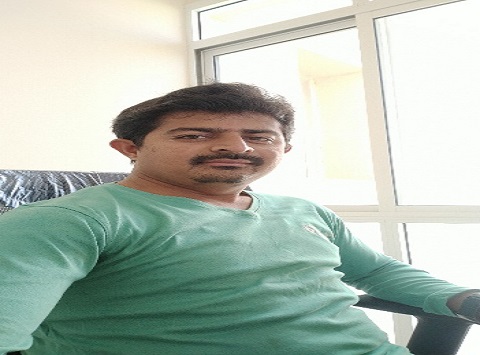After the successful completion of the GutHealth-2021 webinar, Endeavor Research Private Ltd successfully hosted the 3rd Webinar on Webinar on Probiotics, Gut Microbiome & Immune System during July 15, 2021. The webinar was successful in gathering 20 eminent speakers from various reputed organizations and their paramount talks enlightened the gathering.
The pragmatic meet organized by Endeavor Research Private Ltd received generous responses from Industrialists, Academia, Talented Researchers, and the Young Student Community. Industrialists, Researchers, and Students who attended from different parts of the world made the webinar one of the most successful events from the Endeavor.
The scientific program paves a way to gather visionaries through the research talks and presentations and put forward many thought-provoking strategies.
Scientific sessions covered in the webinar i.e. Probiotics in Aquaculture, Gut-Brain Axis, Animal Probiotics and Animal Nutrition, Equipment & Technologies for Probiotics/Microbiota/Microbiome Discovery, Commercialisation and Regulation, Prebiotic interactions with the gut, Probiotics Industrial Products, Probiotics Foods, Gut Microbiota for Health & Disease, Probiotics & Prebiotics Futures, Probiotics industrial products, Probiotics & COVID-19, Pediatrics and Infant health, Microbiome R&D and Business Collaboration, Skin Microbiome, Probiotics Diet and Nutrition, Gut Health & Microbiota
The webinar was marked with the presence of renowned Speakers, Young Researchers, Students, and Business Delegates driving the one-day event into the path of success with thought-provoking keynote and oral presentations.
The webinar was initiated with the honorable presence of the Keynote forum and then Oral presentations. The list includes
Keynote Speaker

Dr. Jeremy R. Everett
University of Greenwich, UK
Jeremy Everett is the Professor of Pharmaceutical Technologies at the University of Greenwich UK and Visiting Professor in the Faculty of Medicine at Imperial College. Jeremy conducts research in metabolic profiling. He is a co-discoverer of pharmacometabonomics, which is the prediction of drug effects prior to dosing via analysis of pre-dose metabolic profiles. His current work is focused on genotype – metabotype correlations in the areas of obesity and ageing and he is a co-inventor on a recently filed patent on an anti-obesogenic agent.
Jeremy received his BSc and Ph.D. in chemistry from Nottingham University, UK. He did post-doctoral studies at McMaster University and at McGill University in Canada. Jeremy is a Fellow of the Royal Society of Chemistry and a Chartered Chemist, a Member of the American Chemical Society, and is an author or co-author on over 100 peer-reviewed publications and patents, with over 5,300 citations to date and an h-index of 32.
Metabolic profiling or metabonomics is an excellent methodology for phenotyping genetically modified mice. We recently used this technology in collaboration with the group of Professor Elizabeth Shephard at UCL, to investigate the metabolic phenotype of some interesting gene knockout (KO) mice.
Fmo5 KO mice display reduced weight gain after 20 weeks and their gut microbiome is different from wildtype (WT) mice. Metabonomics detected a microbial compound in the urine of Fmo5 KO but not of WT mice. Subsequent treatment of WT mice with this compound mimicked some aspects of the Fmo5 KO mouse phenotype including reduced epididymal fat and improved plasma biochemistry.
This talk will overview this work and cover related examples of genotype to phenotype relationships in mice.
Scientific Session Speaker

Nur A. Hasan
EzBiome Inc, USA
Dr. Nur A Hasan is a molecular microbiologist with decade of experience in microbial genomics, bioinformatics, microbiome, infectious disease diagnosis and public health. Dr. Hasan is an accomplished Executive with experience in strategic development of technology innovation in the biotechnology, pharmaceutical, and life science industries. Dr. Hasan is the Chief Executive Officer of EzBiome Inc. Before joining EzBiome, Dr. Hasan was the Chief Scientific Officer at CosmosID and Adjunct Professor at the Center for Bioinformatics and Computational Biology, University of Maryland. Dr. Hasan received his Bachelor and Master’s in Microbiology, M.B.A in Marketing and Ph.D. in Genomics. In his multidisciplinary research experience, Dr. Hasan led various independent large-scale genomic, metagenomic research projects in the field of infectious communicable diseases, microbiome and biomarker discovery that resulted in multiple patents and over 100 peer-reviewed articles, 100+ abstracts and conference proceedings, and over 60 scientific presentations in national and international conferences. Dr. Hasan has professionally served at various prestigious scientific panels including WHO, ASM, NCBI and ISO, and at the Editorial Board of multiple peer-reviewed scientific journals. Currently, Dr. Hasan directs the strategic leadership and scientific functions of EzBiome Inc., a microbiome company which applies precision taxonomy discovery platform to shorten the time for discovery and development of companion diagnostics, and therapeutics biomarkers for microbiome-related diseases.
The microbial community that lives in and on us can perturb our metabolism and immunity, and thus significantly influence the development of a variety of diseases and clinical outcomes. Understanding the structure and functions of these human microbiomes is the key in discovering novel biomarkers, product development, disease dynamics, evidence of utility, effects of drugs on the microbiome, and vice-versa. Taxonomic classification of microbiome sequence data is, therefore, a critical component of this process. However, existing reference databases of known microbial sequences are far from comprehensive as not all microbial species are yet sampled, taxonomy and metadata of known sequences are not updated fast enough, and often contain low-quality and inaccurately labeled sequences. Furthermore, existing classification programs often assign sequences to known reference groups even if they belong to novel taxonomic groups which are absent from the reference taxonomy. Together, these can have a detrimental impact on the accuracy of taxonomic classifications, biodiversity estimates, and reliability of our microbiome research. The introduction of genomics is profoundly changing current bacterial taxonomy by providing accurate methods for precise classification of taxa, inferring the phylogeny of higher taxonomic ranks as well as those at the subspecies level with high accuracy, discovering new microbial species, and even new strains of known species with novel characteristics. Precision taxonomy offers a new frontier in microbiome research while defining diseases by their underlying molecular causes to enable the discovery and development of therapeutic candidates and companion diagnostics for microbiome-related diseases. The presentation will discuss the role of precision taxonomy in uncovering the data unseen by traditional microbiome analysis and demonstrates effective approaches to utilize Precision Taxonomy Discovery Platform to obtain highly confident and actionable results in microbiome analysis to shorten the time for discovery and development of microbiota-based therapeutics and companion diagnostics for microbiome-related diseases.
Scientific Session Speaker

Dr. Shakira Ghazanfar
NARC - Pakistan
Dr. Shakira Ghazanfar got her Ph. D. degree in 2016 in Microbiology/Animal Probiotic She is working as Senior Scientific Officer, in NIGAB, National Agriculture Research Center, Pakistan since 2010. She was regarded among the pioneers, who have initiated Animal Probiotic research to improve livestock productivity in Pakistan by using local isolated microbial strains. She worked on various projects related to the improve livestock productivity. One of her key projects was She was to develop the Target based Animal Probiotic to Improve Nilli Ravi buffalo Milk Yield in cost effective manner. She has isolated more than 600 bacterial strains from local animal gut and submitted their sequencing in to NCBI. She initiated the project for the Establishment of NIGAB-Microbial Culture Collection (NMCC) at NARC. MNCC is a microbial gene bank for the preservation of the bacterial strains for future use in teaching, research and industrial application. Currently She has more than 1000 microbial strains in the NMCC including Pediococcus pentosaceus: Involved in the preparation of silage for improve milk yield in hot condition, Bacillus tequilensis: Involved in the preparation of silage for improve milk yield in hot condition, Lactobacillus agilis, Lactobacillus delbrueckii: Main bacteria involved in the production of yogurt; Pediococcus acidilactici, Enterococcus faecalis, Weissella cibaria, Weissella confusa, Weissella bombi, Lactobacillus plantarum, Lactobacillus rhamnosus etc.
At present, her prime research interests are: Target Probiotic preparation by using Next generation sequencing tools; Food Safety (food-borne illness associated pathogens, nano-active packaging), Nano-medicine (multi-drug resistance related diseases). She is an active researcher and produced many publications in well reputed journals and conferences and published many research papers and book chapters and engaged in research supervising multiple students at PhD, Graduate and Under-graduate level
Well-balanced feed is one of the important factors for better health and production in dairy animals. The poor feeding system may lead to gastrointestinal tract (GIT) problems resultantly low production performance. Under such situation, animal production performance can be increased through treat digestive issue by using of microbial based feed supplements or probiotics. Probiotics, as the researchers suggest, play a vital role in maintaining gut homeostasis by improving the animal gut microbial flora. From this line of research, an animal research study was done to isolate and molecular Characterized animal gut related probiotic strains for their potential use in cow feed. Eleven (11) beneficial microbial strains (SPARC1, SPACR5, SPARC7, SPARC8, SPARC10 SPARC14, SPARC17, SPARC18, SPACR22, SPARC24, SPARC28) were isolated from 25 fecal samples of lactating buffalo. The viable capability in different rumen condition and antimicrobial activity were noted for these strains. Pathogenic bacteria; Listeria monocytogenes, Salmonella typhimurium ATCC 14028, Escherichia coli (ATCC 8739), Staphylococcus aureus (ATCC 6538) and Bacillus cereus (ATCC-11778) were used for antimicrobial resistance tests of the isolated strains. Only 5 (SPARC1, SPARC10 SPARC14, SPARC17, SPARC28) out of 11, showed maximum antimicrobial resistant activity. Overall results showed that, SPARC1 strains possessed higher hydrophobicity percentages (84%) and highest resistance to bile salt (0.3% and 0.5%), and acidic environment (pH 3 and pH 4) as compared to other strains. We performed whole genomics sequencing of the best performing microbial strain SPARC1. Genomic analysis revealed that this bacterium SPARC1 belongs to Pediococcus pentosaceus. The genome of Pediococcus SPARC1 consists of single, circular with 10 contigs and 1736516 bases It has 1753 genes and the mascara are 25 with 47 tRNA and 1 tmRNA. The presence of the resistance gene was in the genomic data was done by using VFDB and ARDB (7,8). Results showed that, no virulence/ resistance presence in our reported genome data. This is first draft genome characterization of Pediococcus pentosaceus isolated from gut of indigenous water buffalo (Bubalus bubalis) of South-East-Asia. This genome shotgun project has been deposited at NCBI/Gene Bank under the accession numbers PRJNA734146. The mice trails showed that no motility was seen in experimental animals. Better feed intake and weight gain was seen in the probiotic fed group as compared to the non-probiotic fed group. Therefore, the isolated strain SPARC1 can be cultured as a target-based probiotic in animal feed.
Scientific Session Speaker

Gaurav Kaushik
Meteoric Biopharmaceuticals Private Limited, India
In 2006, Gaurav Kaushik, a young and dynamic first-generation entrepreneur, set out to author a legacy. Today, under his leadership Meteoric Biopharmaceuticals Pvt. Ltd., with over 100 products across Enzymes, Probiotics, Nutraceuticals, Finished Formulations & Animal Healthcare, is a leading name in the biopharma landscape across the globe.
A gold medalist in Biotechnology and an astute businessman, Gaurav has been awarded the Rashtriya Udyog Ratan Award by the Council of Economic Growth & Research. He is also the recipient of the Indian Leadership Award for Industrial Development by the All-India Achievers Foundation.
Under his leadership, Meteoric Biopharma has been recognized as one of the ‘25 Most Valuable Biopharma Companies’ by ‘CEO Magazine’ for its uncompromised dedication to quality and investment in the latest technology in 2019.
Mr. Kaushik himself was recognized amongst the ‘101 Most Fabulous Health Care Leaders’ by ‘ET Rise & World Health & Wellness Congress’ in January 2020.
Under his impeccable leadership, Meteoric Biopharma recognized by ‘The Economic Times – Rise’ as ‘India’s 6th fastest growing MSME under Biotechnology & Pharmaceutical segment’ in October 2020.
Meteoric Biopharma received ‘Best Brand Award’ at ‘Gujarat Brand Leadership Awards’ in November 2020.
Mr. Kaushik has been recognized as ‘Most Promising business leaders of Asia’ for his exemplary leadership qualities by ‘The Economic Times, Asian Business Leaders Conclave 2020’ in December 2020.
Recently he has been awarded by ‘The Indian Achiever's Award’ for ‘Young Entrepreneur’, In Recognition of Outstanding Professional Achievement & Contribution in Nation Building by ‘Indian Achievers’ Forum’.
Probiotics consist of single or mixed cultures of live microorganisms that can beneficially affect the host by maintaining the intestinal or lung microbiota that play a major role in human health. At present, good scientific evidence exists to support the ability of probiotics to boost human immunity, thereby preventing colonization by pathogens and reducing the incidence and severity of infections.
These alternative approaches include the stimulation of the immune system to fight against viral infections. Among the different approaches to strengthen the immune system, the use of probiotics is the best one. Probiotics can help the body to fight against COVID-19 directly and indirectly. In this review, we comprehensively discuss the use of probiotics for the prevention and control of COVID-19.
Probiotics boost the immune system, enhance the mucosal barrier function and inhibit bacterial adherence and invasion capacity in the intestinal epithelium by being in a direct antagonism with pathogenic bacteria. Gut, lung, and brain as an entity with communication mediated through complex neural, immunologic inflammatory, and neuroendocrine networks called gut-brain-lung axis, is involved in the pathogenicity of bacterial and viral infections, as the intestinal microbiota boosts the alveolar macrophage activity, thus having a protective role in host defense against pneumonia.
Scientific Session Speaker

Dr. Smita Singh
Graphic Era (Deemed-to-be) University, India
Dr. Smita Singh obtained her BSc (Food Processing Technology) from Birla Institute of Technology, Mesra, Ranchi, India; M.Sc and Ph.D (Food Science Technology) from Banaras Hindu University, Varanasi, India. She has previously worked as Food Safety Auditor. Her PhD research was based on the development of Beta-Glucan fortified RTS milk beverage powder. She currently lectures different subjects of Food Technology at the Graphic Era Deemed to be University, Dehradun, India. Her area of interest is fortification, new product development, food safety, etc. She has published various papers in peer reviewed journals. She has also received Inspiring Women of the Year, 2021 Award in the field of Food Technology by IMRF, Vijayawada, India on International Women’s Day (March 8, 2021).
Rabri is a popular dairy-based sweet in Indian subcontinent. The high sugar content in rabri imposes restrictions on its consumption because of the health-concerning perspective. In this study, rabri was prepared with date syrup replacing sugar completely. Three formulations were made varying the amount of buffalo milk and date syrup. The formulations were-T1 (95:5), T2 (90:10) and T3 (85:15) (buffalo milk: date syrup).Optimization was done based on sensory evaluation. T1 scored highest with overall acceptability of 8.83±0.15. The shelf-life analysis was conducted for the optimized sample based on physic-chemical, sensory and microbial parameters (total plate count, yeast and molds and coliform count). The chemical and sensory parameters decreased with the progression of storage period. Total plate count increased with the storage period; however yeast and molds were found at the end of the storage study and coliform count was absent throughout the study.
Scientific Session Speaker

Dr. Prity Singh
Banaras Hindu University, India
I have completed my PhD from Banaras Hindu University, India at the age of 28 years. I have worked on development of probiotic milk powder and also worked on heavy metal analysis using AAS. Now a days I am enjoying motherhood, so it’s actually a pause in carrier.
Lactobacillus strains are the most common strain of probiotics to be used in functional foods. In our research we prepared probiotic milk powder using two strains of same viz. Lactobacilli plantarum and L.casei . Since the activity of probiotics is needed at the lower digestive tract, these organisms should withstand and maintain their viability in the adverse conditions encountered in the host’s upper gastrointestinal tract (GIT). So the bacteria must survive acidic pH of the stomach as well as alkaline conditions of intestine to exert their beneficial effect. Hence the product was tested for its survival in simulated gastric intestinal conditions of acid and bile. For acid tolerance test 1 g sample of probiotic milk powder was aseptically inoculated in 9.0 ml sterile peptone water, pH of solution had been adjusted to 2.0 using 37% hydrochloric acid to simulate gastric juice. The solution was subsequently incubated anaerobically at 37 °C. To determine cell survival, 1 ml solution was collected at 30, 60, 90 and 120 min, then poured on MRS agar plates and incubated at 37 °C for 48 to 72 h. After the incubation period, their colonies were counted. To determine cell viability in bile salt, 1g sample powder was inoculated into sterile peptone water which had already been mixed with 2.0% (w'v) bile salt. Further performance was conducted following the same protocol as gastric juice. Nine samples was prepared having different concentrations of probiotics.
All of the 9 samples initially have more than 6 log CFU/ml of the product while after 2hr exposure to acid upto 3 log reductions occured. bile salt is as harsh as acidic conditions for probiotic bacteria. There was up to 1.5 log CFU'ml reduction in all cases.
Scientific Session Speaker

Dr. Benjamin Anderschou Holbech Jensen
University of Copenhagen, Denmark
Dr. Jensen obtained his PhD (Molecular Biomedicine) from University of Copenhagen and then spent +3 three years in Canada. After this stay, and a few patents and a spinout company later, he returned to Denmark to set up a group as head of the Nutritional Immunology Lab, Department of Biomedical Sciences, Copenhagen. His lab is committed to bridge the current knowledgegaps in how dietary factors, gut microbial community structures, and compartmentalized immunology synergizes to orchestrate host immunometabolism of both gastrointestinal and extra-intestinal origin. They develop and use experimental systems tailored to model human disease with unmet medical needs; both to improve our molecular understanding of disease progression and to identify hierarchical factors of therapeutic relevance. The lab has a particular interest in host defense peptides and their influence on host-microbe mutualism at the onset, prevention and treatment of immune/metabolic dysfunctions. Apart from his daytime job as lab head, Dr. Jensen are deeply involved in several international expert groups, just as he is a frequently used consultant for several top-notch biotech companies.
Interactions between host and gut microbial communities are modulated by diets and play pivotal roles in immunological homeostasis and health. We show that exchanging the protein source in a high fat, high sugar, westernized diet from casein to whole-cell lysates of the noncommensal bacterium Methylococcus capsulatus Bath is sufficient to reverse western diet-induced changes in the gut microbiota to a state resembling that of lean, low fat diet-fed mice, both under mild thermal stress (T22 °C) and at thermoneutrality (T30 °C). Concomitant with microbiota changes, mice fed the Methylococcus-based western diet exhibit improved glucose regulation, reduced body and liver fat, and diminished hepatic immune infiltration. Intake of the Methylococcus-based diet markedly boosts Parabacteroides abundances in a manner depending on adaptive immunity, and upregulates triple positive (Foxp3+RORγt+IL-17+) regulatory T cells in the small and large intestine. Collectively, these data point to the potential for leveraging the use of McB lysates to improve immunometabolic homeostasis.
Scientific Session Speaker

Dana Buckman
Bioform Solutions, USA
Applying almost 30 years of flow cytometry experience in cancer and autoimmune research to developing new assays in microbial analysis. Leveraging expertise in multicolor flow cytometry and cell sorting for the probiotic industry. Dana worked as a senior scientist for Pfizer before forming Flow Pardigm in 2012 and nanoBioforms in 2014 which became BioForm Solutions in 2016. Dana earned two degrees, one in BioChemistry and the other in Molecular, Cellular, Developmental Biology at the University of Colorado. Dana is a certified flow cytometrist (ICCE) and is a member of the Southern California Flow Cytometry Association, serving on the program committee for the annual summit since 2016. Dana is also a member or IPA and serves on the technical and education committees.
Probiotic quality can be materially impacted by the manufacturing, storage condition, packaging, and delivery processes. Environmental variables can specifically result in the activation and subsequent degradation of probiotics and cause the loss of its efficacy and desired shelf life. Therefore, a systematic study was designed to understand how each of these variables impact the degradation of the probiotic. This is scientifically relevant for the industry to determine the protection requirements and how to implement various technologies to address this issue. A mere CFU count mechanism, commonly used in the industry may not be sufficient to understand the degradation process and how to implement corrective actions. Here we present a quick and accurate method to monitor cell health perturbations due to such environmental conditions. This creates an efficient protective environment through packaging to ensure maximum product efficacy. This study uses flow cytometry to investigate the effect of individual environmental conditions on cell health after incubation of probiotics under different RH conditions.
Scientific Session Speaker

Ajith Nair
Liveo Research, USA
Dr. Ajith Nair has dedicated the last 20 years of his 30 years of industrial research experience to the development of innovative methods improving drug stabilization process. His experience also includes extensive work on extending FDA recommended QbD Process to the drug stabilization process. He is the inventor of the first scientific packaging development and sensitivity profiling method for solid oral drugs known as Liveo Optima.
He established and managed two world-class R&D centers in Singapore and USA. These centers focus on providing professional packaging research services to the pharmaceutical industry. Dr. Nair holds 14 patents and 10 scientific publications. He has an MS in Physical and Polymer Chemistry and a PhD in Surface Chemistry.
Probiotic quality can be materially impacted by the manufacturing, storage condition, packaging, and delivery processes. Environmental variables can specifically result in the activation and subsequent degradation of probiotics and cause the loss of its efficacy and desired shelf life. Therefore, a systematic study was designed to understand how each of these variables impact the degradation of the probiotic. This is scientifically relevant for the industry to determine the protection requirements and how to implement various technologies to address this issue. A mere CFU count mechanism, commonly used in the industry may not be sufficient to understand the degradation process and how to implement corrective actions. Here we present a quick and accurate method to monitor cell health perturbations due to such environmental conditions. This creates an efficient protective environment through packaging to ensure maximum product efficacy. This study uses flow cytometry to investigate the effect of individual environmental conditions on cell health after incubation of probiotics under different RH conditions.
Scientific Session Speaker

Belal J Muhialdin
Universiti Putra Malaysia, Malaysia
Dr. Belal J. Muhialdin obtained his PhD (Food Biotechnology) from Universiti Putra Malaysia (UPM). He is previously worked as Post-Doctoral Research Fellow at UPM, and currently he is appointed as Senior Lecturer at the Department of Food Science, Faculty of Food Science and Technology UPM. His expertise in Food Microbiology with 45 journal publications made on this adjacent topic to date. His research interests emphasize lactic acid bacteria and their contributions in the production of fermented foods, alongside their health benefits for the consumers. Recently, he received International Collaboration Fund in collaboration with University of Alberta to determine the health benefits of plant-based fermented foods that demonstrated immunomodulation effects in animal models. Dr. Belal apply advanced genetics, ecology and immune assays techniques to study the common and unique properties of individual strains as well as the functional capacities of food effects of fermented foods on the human gut microbiome.
The recent Covid-19 outbreak increased the interest and demand of the consumers and healthcare individuals for non-conventional antiviral agents that can reduce the risk of infections, promote fast recovery, and reduce the death rate. Not all fermented foods contain probiotics as they may undergo sterilization to remove the microorganisms. Certain fermented foods and beverages (yogurt, cheese, kombucha, kefir, kimchi, natto and tapai) contain probiotics. Several probiotics demonstrated broad range antimicrobial activities including antiviral activity. On the other hand, postbiotics (free fatty acids, free amino acids, organic acids, bacteriocins and bioactive peptides) showed direct and indirect antimicrobial activities towards gut pathogens. In this study, we shade a light on the fermented foods and their probiotics bacteria diversity, health benefits, interaction with immune system and antiviral activity. The antiviral activity of fermented foods and their probiotics was suggested to be due to their potential to block the virus attachment to the host cells (Neutralization). Moreover, fermented foods and their probiotics improve the immune system function via enhancing natural killers cell toxicity, enhance the production of pro-inflammatory cytokines, and increasing the cytotoxic of T lymphocytes (CD3+, CD16+, CD56+). Our recent results showed that traditional fermented glutinous rice (tapai pulut) supplemented with Lactiplantibacillus plantarum has a high potential for immunomodulatory effect and significantly increased the T-cells population. In addition, the levels of immune cells in the blood, including WBC, neutro, and lymp, were significantly (p < 0.05) increased in the mice that received tapai pulut supplemented with the probiotic
Scientific Session Speaker

Caroline de Freitas
São Paulo State University, Brazil
Caroline de Freitas obtained her BSc (Biotechnology) from the Federal University of São Carlos and her MSc (Applied Microbiology) from the São Paulo State University and is currently attending Ph.D. (Applied Microbiology) in São Paulo State University. In her PhD research she intends to purify/isolate XOS by its degree of polymerization using molecular exclusion chromatography and evaluate their individual potential for the growth of probiotic bacteria. In addition, the production of metabolites produced by XOS fermentation will be evaluated.
Xylooligosaccharides (XOS) are xylose oligomers, recognized for their prebiotic effect, with the ability to impact health by influencing the gut microbiota. The aim of this study was to produce XOS by xylan enzymatic hydrolysis and evaluate the prebiotic effect. Endoxylanase was produced by Aspergillus versicolor and purified, and the xylan from banana pseudostem was alkali extracted. XOS production was performed through enzymatic hydrolysis by varying the parameters of xylanase load, substrate mass load and reaction time. Lactobacillus plantarum and Lactobacillus fermentum were grown using XOS as carbon source. Using an enzymatic load of 30 IU.g-1, it was possible to obtain a good amount of XOS and good yield, around 11 g.L-1 and 61%, respectively. Regarding the substrate concentration, the increase of concentration also increased XOS production, however decreased the yield. There was not significant XOS production until 16 h and production was similar after 24 h. XOS with higher degree of polymerization were mainly produced. Both probiotic bacteria were able to grow on XOS containing medium. Up to 48 h the growth was similar, of 1010 CFU/mL, with glucose and XOS as the carbon source. The growth with XOS increased after 48 h, while the growth with glucose remained stationary. This study demonstrates that XOS from banana pseudostem xylan presents prebiotic properties by increasing probiotic bacteria growth.
Scientific Session Speaker

Mounir Adnane
University of Tiaret, Algeria
Dr. Mounir Adnane obtained his Surgeon Veterinary Degree from the University of Blida (Algeria), and his Magister and PhD (Veterinary) from the High National Veterinary School of Algiers (Algeria). He is previously worked as quality control officer for the Ministry of Agriculture and Rural development in Algeria. He worked also as Postdoc at University College Dublin and Research Assistant at Trinity College Dublin (Ireland). His PhD research was based on the development of new technic for the diagnosis of uterine inflammation, by measuring immune active molecules in the cervicovaginal mucus. He currently lectures Cytogenetic and Theriogenology at the University of Tiered (Algeria). His area of interest is immunology of reproduction, uterine inflammation, genital microbiome, and pheromone production. He has published various papers and reviewing in peer reviewed journals.
Cervico-vaginal mucus (CVM), the product of epithelial cells lining the uterus, cervix, and vagina, is secreted to facilitate uterine lubrication and microbial clearance. Predominantly composed of water and mucins, CVM also contains high levels of immune-active proteins such as immunoglobulin A (IgA), defensins, lactoferrin and lysozyme which protect against infection by blocking adhesion and mediating microbial killing. The vaginal mucosa in healthy female is colonized by an equilibrated and dynamic composition of aerobic, facultative anaerobic and obligate anaerobic microbes. According to the fermentation hypothesis, genital microbiome would have a role in pheromone production, volatile compounds that attract males for coitus. Furthermore, commensal microbiome plays a key role in protection of the genital tract from pathogenic microbes by competition effect and through the production of molecules with beneficial effects such as lactic acid and hydrogen peroxide.
The alteration of normal balance between the microbial populations leads to dysbiosis. For instance, vaginal dysbiosis is the presence of polymicrobial populations with either a modest lactobacillus load or complete absence of lactobacilli leading to several recurrent diseases such as vaginal inflammation and urinary tract infections.
Lactobacilli strains could be used as probiotics for the prevention of different recurrent diseases such as vulvovaginal candidiasis and, interestingly, to protect women from acquiring HIV from their male partners and to reduce viral shedding into the lower genital tract.
Herein, we would like to critically discuss the current state of knowledge on microbially produced signals in animals and human and the role of genital and CVM microbiota in fertility, genital tract protection and possible usage as probiotic for better management of recurrent diseases.
Scientific Session Speaker

Dr. Poornachandra Rao K
University of Mysore, India
Dr. Poornachandra Rao K obtained his B. Sc (Biochemistry, Biotechnology and Microbiology) from the University of Mysore and M. Sc (Microbiology) and his Ph. D (Microbiology) from the University of Mysore, Mysore, Karnataka, India. He is previously worked for VIMTA Labs, as a Scientist in Food Microbiology Department. His PhD research was based on the Screening, and characterization of potential probiotic strains from Traditional fermented foods and their application for therapeutic aspects. His area of interest is Food Microbiology, Probiotics, Product Development, and Agricultural Microbiology. He has published various papers in peer reviewed journals.
This study presents the isolation, characterization and preservative efficacy of a lantibiotic from a probiotic strain Lactobacillus plantarum strain MYS84. The isolate Lp strain MYS84 was identified by biochemical, physiological and genetic methods. Standard in-vitro techniques revealed the strain possess good probiotic attributes. Purification and characterization of a lantibiotic from probiotic Lp strain MYS84 is also reported. This lantibiotic (~42 kDa) was active against Pseudomanas aeruginosa-MTCC 7903 and attributed to proteinaceous and remained active on treatment with catalase, lysozyme and papain as well as heat resistant and acid stable. Further, the culture filtrate exhibited strong biofilm inhibition (78%). Significant reductions (P ≤ 0.05) in total plate counts, Coliforms, Pseudomonas and Staphylococcus counts was observed in stored chicken meat (30 ± 2 °C) after treatment with lantibiotic as compared with control. The pH and accumulation of metmyoglobin in the lantibiotic treated chicken cut varied during storage and suppressed lipid peroxidation. The addition of lantibiotic as a preservative has increased the shelf life of chicken meat and the preservation was not significantly (P < 0.05) affected the sensory qualities when comparing with control. The results of the study indicate the potential of the lantibiotic as a safe and natural preservative/decontaminant for chicken meat.
Scientific Session Speaker

Atieh Darbandi
Iran university medicine sciense, Iran
Dr. Atieh Darbandi received his BSc (Bacteriology) from Shahed Medical, the University of Iran, and his Ph.D. (Bacteriology) from the Iran Medical University. I did research at the same time as my studies and I have 6 years of experience working in a medical diagnostic laboratory. I based her doctoral research on the application of genotoxicity and cytotoxicity of probiotics. I am currently working on probiotics at the Iran University of Medical Sciences. I have several articles on this subject.
Aims: To perform a systematic review on randomized controlled trials to examine the efficacy of probiotics, prebiotics and synbiotics in the treatment of IBD.
Methods and Results: PubMed, Web of science, Scopus and Google Scholar were systematically searched from January 2009 to January 2020 using the following keywords: ‘Inflammatory Bowel Disease’, ‘Probiotics’ and ‘Clinical trial’. The statistical analysis was performed using SPSS software version 24.0. A total of 1832 articles were found during the initial search and 21 clinical trials were eligible. Studies comparing the effects of probiotics and placebo among patients with active ulcerative colitis (UC) showed a significant difference in clinical outcomes. Moreover, probiotics improved the overall induction of remission rates among patients with Crohn’s disease (CD). Probiotics significantly decreased the IL-1b, TNF-a and IL-8 levels. Also, the need for systemic steroids, hospitalization, surgery, as well as histological score and disease activity index significantly decreased in patients who used probiotic or pro-/synbiotics.
Conclusions: The use of probiotics, as food supplements, can induce anti-inflammatory reactions, balance the intestinal homeostasis and induce remission in IBD. The efficacy of probiotics on remission induction is more reported in UC rather than CD. Larger well-designed clinical trials are needed to further determine whether probiotics are of clear benefits for remission in IBD.
Scientific Session Speaker

Amandeep Singh
ISF College of Pharmacy, India
Mr.Amandeep singh obtained his D. Pharmacy, B. Pharmacy and M. Pharmacy from ISF College of Pharmacy, Moga, Punjab, India. Pursuing his Ph.D. from MRSPTU, Bathinda, Punjab, India. Currently, he is working as an assistant professor at ISF College of Pharmacy, Moga, Punjab, India. His area of interest including targeted drug delivery systems, nanocarrier. He has published more than 40 review and research articles in various reputed journals. He has published more than 3 book chapters. He is the editorial team member of various national and international reputed journals. He was the brand ambassador of Bentham science-2020. He has also participated and presented his research work at various national and international conferences.
The objective of this study was to develop and characterize enteric-coated pectin pellets containing mesalamine and S.bulardii for specific colon targeted drug delivery for ulcerative colitis management. Pellets of mesalamine and S.bulardii were produced by extrusion- spheronization technique by using pectin and microcrystalline cellulose and coated with Cellulose acetate phthalate. The pellets were evaluated for morphology, micromeritic properties as well as through Fourier transform infrared spectroscopy, differential scanning calorimetry and X-ray diffraction techniques and the results confirmed that all the ingredients of the pellets were compatible with each other without revealing any specific interaction. The dissolution profiles of uncoated and coated pellets were examined at pH 1.2, 6.8 and 7.4 with and without rat cecal content. Further pharmacokinetic studies revealed a lower value of maximum concentration in the case of cellulose acetate phthalate coated pellets formulation in comparison to uncoated ones which, evidenced the lower systemic exposure of the drug. Finally, to ensure the therapeutic activity of the selected formulation, a 2,4,6-trinitrobenzene sulfonic acid-induced colitis model was used. Colon/ Bodyweight ratio, myeloperoxidase, lipid peroxides level, glutathione activity and histological evaluation were performed in the colitis model. Animal experiments revealed that coated pellets of mesalamine and S.bulardii significantly improved the diseased conditions in Wistar rats. The confirmation of which was done by the gain in weight, clinical improvement in macroscopic and microscopic factors of induced colitis. These findings ensure that coated pellet formulation has promising potential for targeted drug delivery of mesalamine and S.bulardii to the colon as well as to improve the viability of probiotics and enhancement in the effectiveness of mesalamine in the management of ulcerative colitis.